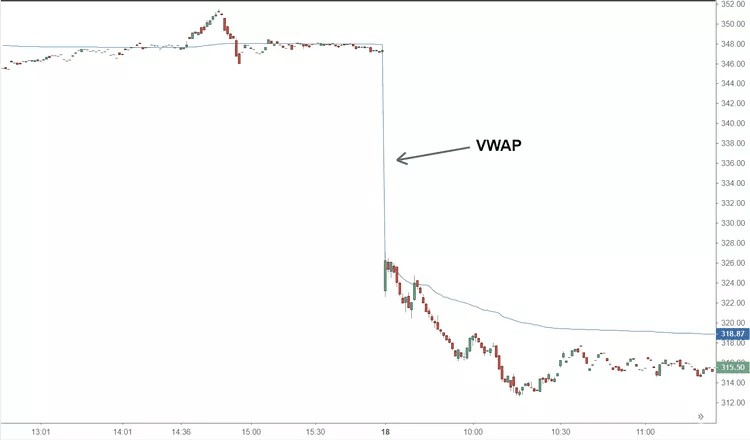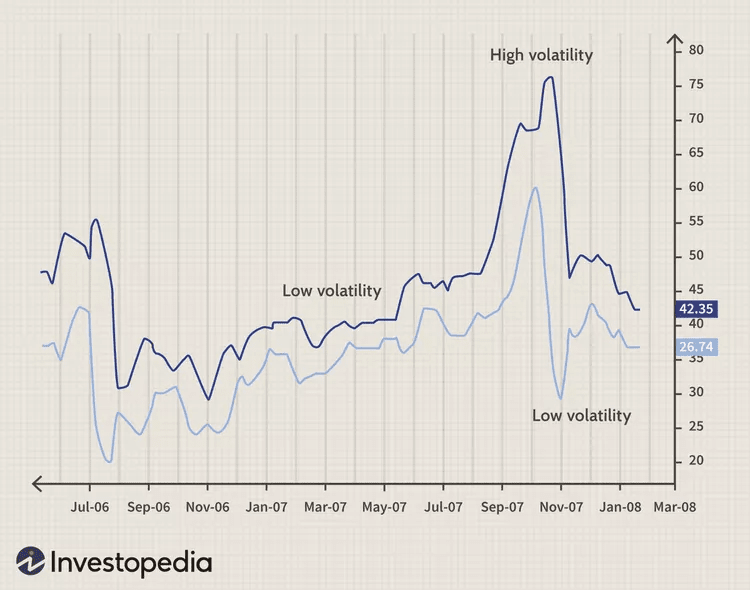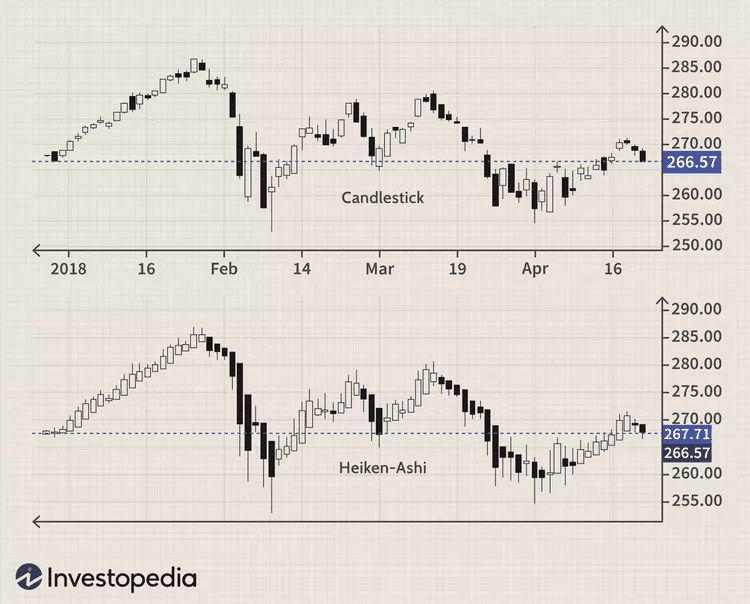Short-term trading in the volatile crypto market primarily requires precision and speed of decision-making. Technical analysis tools, particularly indicators, help determine the trend, key price levels, and potential reversal points. However, not all of them are suitable for working on small timeframes, as they display data with a delay.
Why popular indicators are losing relevance for scalping in 2025
On 5M-15M timeframes used for scalping, the key success factor is the speed of reaction to market changes.
Classic indicators like RSI and MACD are calculated based on averaged values of past candles. This means that signals are formed with a delay, while on short time intervals even 1-2 candles can play a critical role.
Especially considering some features of the modern crypto market:
increase in bot activity on centralized and decentralized exchanges;
increase in the number of low-liquid tokens;
price manipulation by large players.
These changes create a demand for tools that take into account the speed of price movements and the balance between buyers and sellers with minimal delay.
Best indicators for short-term trading
Scalpers and intraday traders operate in conditions where every second matters, and a false signal can be costly. They prefer a limited set of fast indicators focused on volumes, volatility, and price behavior.
Volume Weighted Average Price (VWAP)
VWAP shows the average price of an asset considering trading volume — unlike ordinary moving averages, it reflects not only direction but also the strength of demand or supply. This is one of the basic tools for intraday trading, especially on highly volatile assets.

VWAP helps identify zones where buyers or sellers prevail and find entry points on retracements. For example, if the price is trading above the line — this is a signal of strong buying, and if below — selling. This gives scalpers an advantage when working in sideways movement and on impulses.
In TradingView, VWAP is available by default. For a crypto market that operates 24/7, it is recommended to use daily VWAP with a zero reference point at UTC (00:00).
Average True Range (ATR)
ATR measures the current level of volatility of an asset, that is, how quickly and strongly the price changes. It does not indicate the direction of the trend but provides important information for calculating the stop-loss level. Especially useful in short-term trading conditions, where too narrow stops lead to closing positions even on insignificant fluctuations.

ATR does not provide an entry signal but helps avoid unnecessary mistakes. When volatility increases, the value rises — this is a reason to widen the stop or not enter the market at all. This approach protects against accidental liquidations and helps work systematically, especially during periods of active movement.
To calculate the stop, the formula is used: stop = ATR × 2 — it considers the average fluctuation with a margin.
In TradingView, the indicator is available by default. For short-term trades, a period of 14 on the 5-minute timeframe is suitable, but shorter periods (5 or 7) can be used if a more sensitive reaction is required.
Heikin Ashi Candles
Heikin Ashi is a charting method that smooths price fluctuations, helping to filter out market noise. Unlike classic Japanese candlesticks, where each displays specific levels over a period, Heikin Ashi uses an averaged formula. This makes the chart 'cleaner' and allows for better visibility of trends, especially on smaller timeframes.

The tool helps track sustained movements: a series of green candles signals an uptrend, red — a downtrend. By filtering out micro-fluctuations, emotional load decreases — the trader finds it easier to hold a position and not react to every movement, which is especially valuable on short timeframes.
In TradingView, it is activated as a way to display the chart. No additional parameters are required.
Combining indicators for accurate signals
In short-term trading, where decisions need to be made quickly, a simple and reliable signal structure is important. An excess of indicators only complicates analysis and slows down reaction, so it is optimal to use no more than two tools simultaneously.
VWAP + ATR
This pair helps identify the entry moment and manage risks. Entry is made on VWAP breakout — this signals that the price is entering an active phase (impulse or trend). The stop is set according to the aforementioned formula ATR × 2, which takes into account current volatility.
VWAP sets the entry point when the price moves into a new phase.
ATR determines the safe distance of the stop considering current volatility.
The combination allows you to enter a strong movement and limit potential losses.
Suitable for volatile situations and fast impulse trades.
Such a setup minimizes the amount of unnecessary data and helps trade according to the strategy without getting distracted by noise.
Heikin Ashi + volumes
This pair is used to find reversal points and confirm the strength of the movement. The signal is a change in the color of the Heikin Ashi candle against the background of volume growth.
This indicates not just a fluctuation change, but real demand or pressure.
A change in the color of the Heikin Ashi candle signals a reversal.
An increase in volumes confirms that there is an active side behind the movement.
The combination filters out false signals that appear without volume support.
Especially effective on small timeframes in consolidation zones.
Such an approach allows avoiding premature entries and better understanding where real movement begins, rather than just a visual 'jump' on the chart.
Advantages of minimal setup
In short-term trading conditions, the quality of the signal is important, but so is the speed of decision-making. A simple and clear structure helps the trader act quickly and without unnecessary analysis.
Using 1-2 indicators within a single strategy provides an optimal balance between signal accuracy and execution speed.
How to avoid mistakes in short-term trading
Short-term trading requires instant reaction, a clear plan, and absolute concentration. Mistakes here cost more than in any other strategies. Below are the main mistakes that most often lead to losses and how to avoid them.
Chart overload
One of the most typical failures is the attempt to 'amplify' signals through the accumulation of tools. Beginners overlay RSI, MACD, Stochastic, Bollinger and another dozen lines. As a result, the data starts to contradict each other, the chart turns into visual noise, and the trader loses focus.
It is better to choose one or two indicators that complement each other — for example, VWAP for assessing direction and ATR for controlling volatility.
Ignoring commissions
Many beginners underestimate how significantly commissions can impact results. This is especially true for traders who open dozens of short trades a day. Even with a 1% profit on a position, commissions can 'eat' half of the income — and sometimes even lead to losses.
It is important to consider commissions in advance when calculating profits, optimize the number of trades, and also use discounts or exchange loyalty programs.
Trading against the news
Ignoring fundamental events often leads to losses. Even a technically 'clean' entry signal may turn out to be false if important macro data, regulator statements, or influencer publications are released at that moment. The market can turn instantly, and the trader finds themselves on the wrong side of the impulse.
Before each trade, it is worth checking the news background. Especially if there is a CPI publication, employment data, or comments from officials on the horizon.
Lack of stop-loss
On fast timeframes, the price can move dozens of points in a few minutes. Without a pre-set stop-loss, a trader can incur losses. Sometimes, it happens that a stop was planned — but in the moment it is ignored, hoping for a reversal.
Stop-loss should be technically and psychologically justified. Tie it to volatility, set it immediately upon entering a position, and do not move it without grounds.
Emotional trading and lack of a scenario
After a series of losing trades or an unexpected reversal, a trader can lose control — they start opening positions spontaneously, without analysis, trying to 'get back' or avoiding entries out of fear. In such a state, decisions become reactive rather than conscious.
Before the session begins, a specific trading plan can be made — where to enter, where to exit, under what conditions to cancel the trade. Keeping a trading journal will help track emotional decisions.
Mistakes are an integral part of trading. But if you can recognize recurring failures and embed solutions into your strategy in advance, you are already ahead of most market participants. In the short term, those who survive are not the ones who are right more often, but those who make critical mistakes less frequently.
Conclusions
Short-term trading in 2025 requires maximum concentration, structure, and the ability to adapt to rapidly changing market conditions.
Classic tools are losing relevance due to delayed signals, chart overload, and ignoring real market dynamics. Instead, traders are moving towards compact setups — simple but precise combinations based on VWAP, ATR, Heikin Ashi, and volumes that allow for better reading of market intentions and timely action.
It is not the one who uses more indicators that wins, but the one who understands the context better and works clearly according to the algorithm. Combining signals, working with relevant levels, and discipline in trade management — this is what creates a sustainable advantage on short timeframes.
